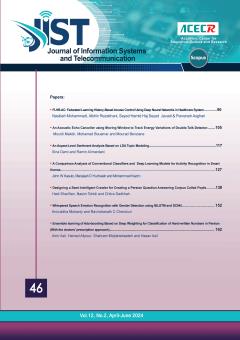The Internet of Things (IoT) connects various kinds of things such as physical devices, vehicles, home appliances, etc. to each other enabling them to exchange data. The IoT also allows objects to be sensed or controlled remotely and results in improved efficiency, accu
More
The Internet of Things (IoT) connects various kinds of things such as physical devices, vehicles, home appliances, etc. to each other enabling them to exchange data. The IoT also allows objects to be sensed or controlled remotely and results in improved efficiency, accuracy and economic benefits. Therefore, the number of connected devices through IoT is increasing rapidly. Machina Research estimates that the IoT will consist of about 2.6 billion objects by 2020. Different network technologies have been developed to provide connectivity of this large number of devices, like WiFi for cellular-based connections, ZigBee and Bluetooth for indoor connections and Low Power Wide Area Network's (LPWAN) for low power long-distance connections. LPWAN may be used as a private network, or may also be a service offered by a third party, allowing companies to deploy it without investing in gateway technology. Two available leading technologies for LPWAN are narrow-band systems and wide-band plus coding gain systems. In the first one, receiver bandwidth is scaled down to reduce noise seen by the receiver, while in the second one, coding gain is added to the higher rate signal to combat the high receiver noise in a wideband receiver. Both LoRa and NB-IoT standards were developed to improve security, power efficiency, and interoperability for IoT devices. They support bidirectional communication, and both are designed to scale well, from a few devices to millions of devices. LoRa operates in low frequencies, particularly in an unlicensed spectrum, which avoids additional subscription costs in comparison to NB-IoT, but has lower Quality of Service. NB-IoT is designed to function in a 200kHz carrier re-farmed from GSM, with the additional advantage of being able to operate in a shared spectrum with an existing LTE network. But in the other hand, it has lower battery lifetime and capacity. This paper is a survey on both systems. The review includes an in-depth study of their essential parameters such as battery lifetime, capacity, cost, QoS, latency, reliability, and range and presents a comprehensive comparison between them. This paper reviews created testbeds of recent researches over both systems to compare and verify their performance.
Manuscript profile


